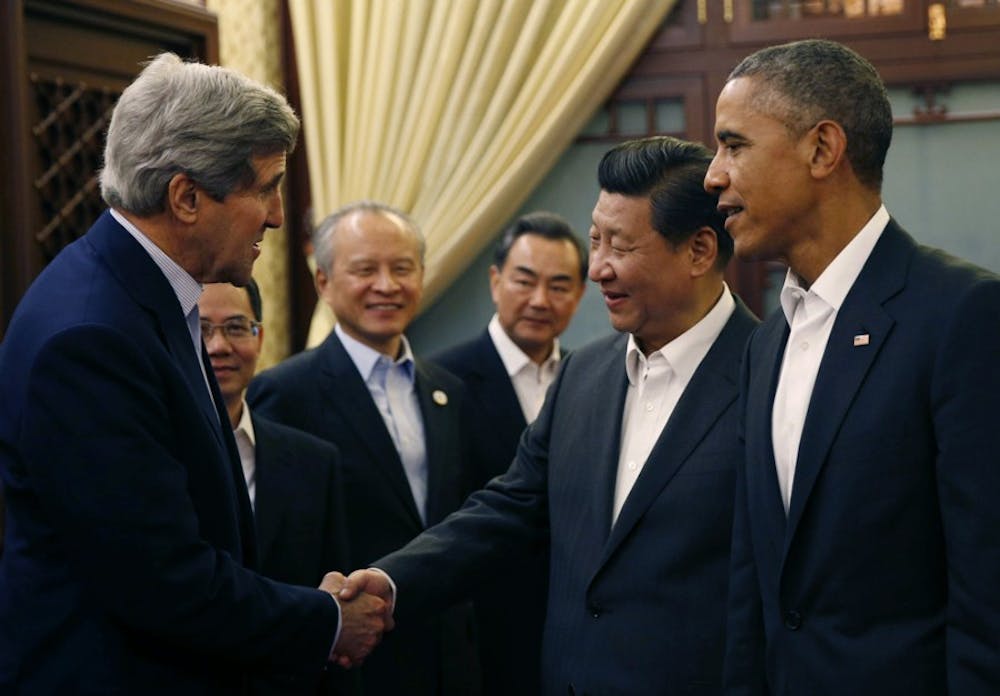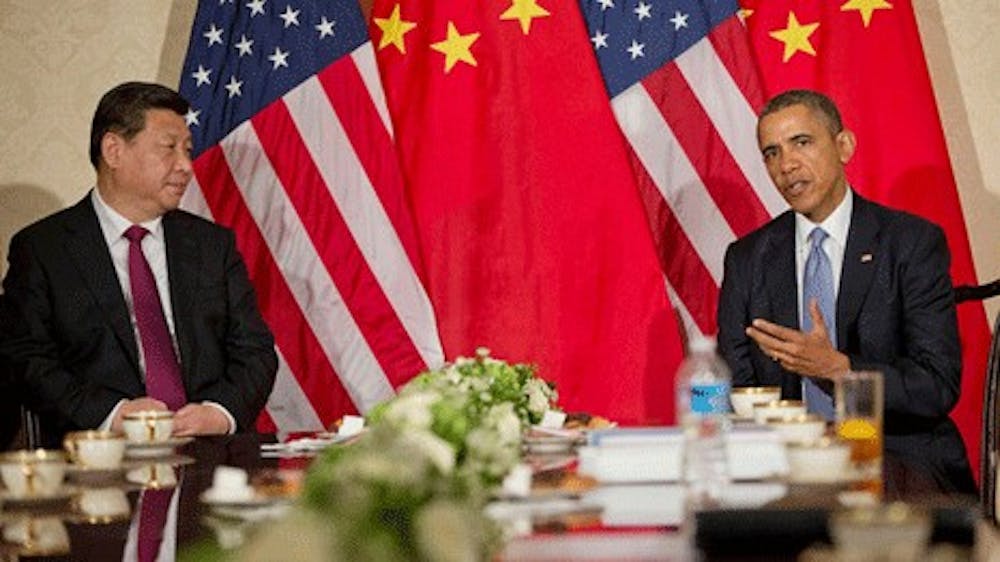By Joe Friedrichsen | Echo

President Barack Obama and Chinese President Xi Jinping struck an ambitious deal on Wednesday at the Asia-Pacific Economic Forum. The two countries agreed to cap carbon emissions and increase the use of renewable energy.
China, the world's largest emitter of greenhouse gases, committed to capping carbon emissions by 2030, The Washington Post reported. This is the first pledge of its kind China has made. China aims to get 20 percent of its energy from renewable resources by the same year.
For the U.S., Obama unveiled goals to cut emissions by 26 to 28 percent from 2005 levels by 2025. Together, the U.S. and China account for about 45 percent of the world's greenhouse gas emissions.
The U.N.'s climate change chief, Christiana Figueres, said the China-U.S. deal is great news for next year's Paris climate summit. This comes following the European Union's (EU) pledge last month to cut emissions 40 percent by 2030, reported The Guardian. The EU is the world's third-largest emitter. With the top three carbon-emitters promising plans to reduce their pollution, pressure will build on other countries, such as India, Russia and Japan, to announce their own targets.
Michael Levi, an expert on energy, security and climate at the Council on Foreign Relations, saw the news as a sign that China is approaching international climate diplomacy more constructively than before.
Despite their promises, the U.S. and China will have a difficult time meeting their goals.
According to The Washington Post, coal still fuels about 80 percent of China's electricity and heavy industries like the steel and cement industries.
In addition, China has agreed to provide another 800 to 1,000 gigawatts of nuclear, wind, solar and other zero-emission generation capacity by 2030. But that amount of zero-emission output still exceeds all coal-fired power plants in China today and nearly equals the U.S.'s total electricity generating capacity, reported CNN.
Moving away from a coal-driven economy will require China to transform the very makeup of its industrial capability, reported The Washington Post.
Back in Washington, the New York Times reported Obama administration officials acknowledged the president could face opposition to his carbon emission reduction plans from a Republican-controlled Congress.
A sizable proportion of Obama's reduction promises depend on cutting carbon pollution from coal-fired plants, reported CBS News.
Nevertheless, Republicans could derail Obama's emission reduction plans by using their congressional majority to try rolling back some of Obama's initiatives, undermining the U.S's ability to meet new reduction targets, according to The New York Times. Using their control of Congress, Republicans also want to scale back the Environmental Protection Agency's ability to limit carbon emissions from power plants-an important part of Obama's climate action plan.
For the U.S. to meet its goals, it needs to double the pace of its carbon pollution reduction from an average of 1.2 percent per year to 2.3 percent from 2005 to 2020 and to 2.8 percent per year between 2020 and 2025, reported the Washington Post.
The climate agreement tops off a productive trip that also resulted in China and the U.S. approving a military agreement designed to avert inadvertent clashes off the Chinese coast between American and Chinese aircraft and warships.
According to the Washington Post, both countries also agreed to eliminate tariffs on dozens of high-tech products.
U.S. Trade Representative Michael Froman told reporters in Beijing the recent agreements are encouraging news for the U.S.-China relationship.
Froman believes the cooperation shows that the U.S. and China can work together to support their bilateral economic system and support a multilateral trading system.





